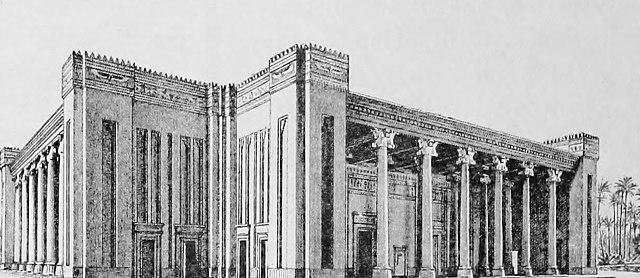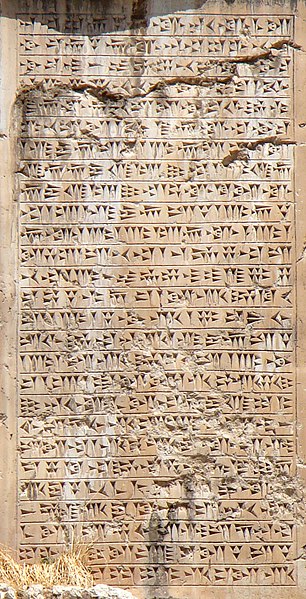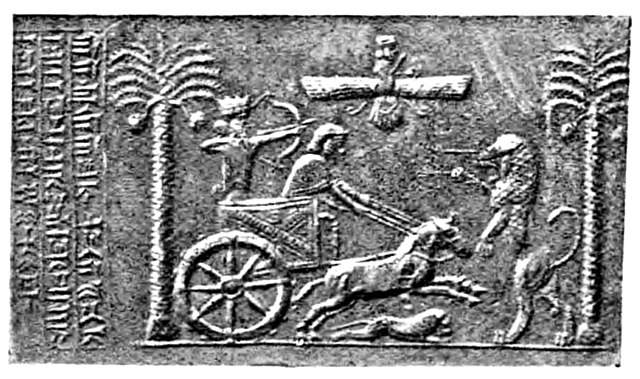Susa was an ancient city in the lower Zagros Mountains about 250 km (160 mi) east of the Tigris, between the Karkheh and Dez Rivers in modern day Iran. One of the most important cities of the Ancient Near East, Susa served as the capital of Elam and the winter capital of Achaemenid Empire, and remained a strategic centre during the Parthian and Sasanian periods.
The Palace of Darius in Susa
Assyria. Ruins of Susa, Brooklyn Museum Archives, Goodyear Archival Collection
Goblet and cup, Iran, Susa I style, 4th millennium BC – Ubaid period; goblet height c. 12 cm; Sèvres – Cité de la céramique, France
Master of animals, Susa I, Louvre Sb 2246.
Elamite, also known as Hatamtite and formerly as Susian, is an extinct language that was spoken by the ancient Elamites. It was recorded in what is now southwestern Iran from 2600 BC to 330 BC. Elamite works disappear from the archeological record after Alexander the Great entered Iran, but the spoken language might have survived until the 11th century AD. Elamite is generally thought to have no demonstrable relatives and is usually considered a language isolate. The lack of established relatives makes its interpretation difficult.
Tablet of Elamite script
Inscription of Shutruk-Nahhunte in Elamite cuneiform, circa 1150 BC, on the Victory Stele of Naram-Sin.
Inscription in Elamite, in the Xerxes I inscription at Van, 5th century BCE
Seal of Darius the Great hunting in a chariot, reading "I am Darius, the Great King" in Old Persian (𐎠𐎭𐎶𐏐𐎭𐎠𐎼𐎹𐎺𐎢𐏁𐎴 𐏋, "adam Dārayavaʰuš xšāyaθiya"), as well as in Elamite and Babylonian. The word 'great' only appears in Babylonian. British Museum.








